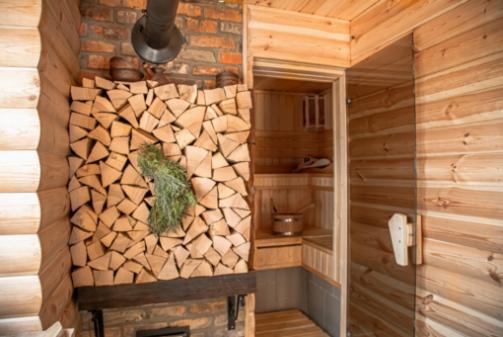Efficiency and Heat Output: Maximizing Performance
22 September 2025 by Jaya S.As a human writer and expert in saunas, DIY home, and garden, you understand the importance of maximizing the efficiency and heat output of your wood-burning sauna. Proper ventilation, heat retention, insulation, and airflow dynamics all play crucial roles in achieving optimal performance. By implementing the tips and techniques discussed in this article, you can ensure that your wood-burning sauna operates at its peak potential, providing you with a relaxing and rejuvenating experience every time.

Tips for Properly Ventilating Your Wood-Burning Sauna
Proper ventilation is essential for maintaining a safe and comfortable environment in your wood-burning sauna. Without adequate ventilation, the sauna can become uncomfortably hot and stuffy, making it difficult to relax and enjoy the sauna experience. Additionally, poor ventilation can lead to a buildup of harmful gases, such as carbon monoxide, which can pose a serious health risk. To ensure proper ventilation in your wood-burning sauna, consider the following tips:Install a ventilation system: A properly designed ventilation system is key to maintaining optimal airflow in your sauna. This can include vents in the walls or ceiling to allow fresh air to enter and hot air to escape. You can also consider installing a mechanical ventilation system, such as a fan, to help circulate the air more effectively.
Keep the door cracked open: While it may be tempting to keep the sauna door closed to trap in heat, this can actually hinder air circulation. To ensure adequate ventilation, keep the door cracked open slightly to allow fresh air to enter and hot air to escape.
Use a chimney or flue: If your wood-burning sauna has a chimney or flue, make sure it is clear of any obstructions and functioning properly. This will help to safely vent any smoke or gases produced by the burning wood.
Regularly clean the sauna: A buildup of debris, such as ash or soot, can obstruct ventilation and pose a fire hazard. Regularly clean your sauna to ensure clear airflow and prevent any potential safety issues. By following these tips for properly ventilating your wood-burning sauna, you can ensure a safe and enjoyable sauna experience for years to come.
Maximizing Heat Retention in Your Wood-Burning Sauna
Proper heat retention not only ensures that your sauna reaches and maintains the desired temperature, but it also helps to conserve energy and reduce the amount of wood needed for heating. Here are some tips to help you maximize heat retention in your wood-burning sauna:Properly Seal Doors and Windows: One of the simplest ways to improve heat retention in your sauna is to ensure that all doors and windows are properly sealed. This will prevent heat from escaping and cold air from entering, helping to maintain a consistent temperature inside the sauna.
Use High-Quality Insulation: Insulation plays a crucial role in heat retention. Make sure that your sauna is properly insulated with high-quality materials to prevent heat loss. This will help to keep the sauna warm for longer periods of time and reduce the need for constant heating.
Optimize Ventilation: While it may seem counterintuitive, proper ventilation is essential for maximizing heat retention in a wood-burning sauna. By allowing for adequate airflow, you can prevent the buildup of excess moisture and maintain a comfortable temperature inside the sauna.
Preheat the Sauna: To ensure optimal heat retention, it is important to preheat the sauna before each use. This will help to warm up the space and improve heat retention once you are inside. Additionally, using a stove with a large stone mass can help to retain heat and ensure a consistent temperature throughout your sauna session. By following these tips, you can maximize heat retention in your wood-burning sauna and enjoy a more comfortable and efficient sauna experience.